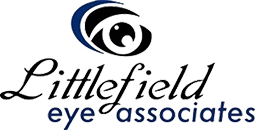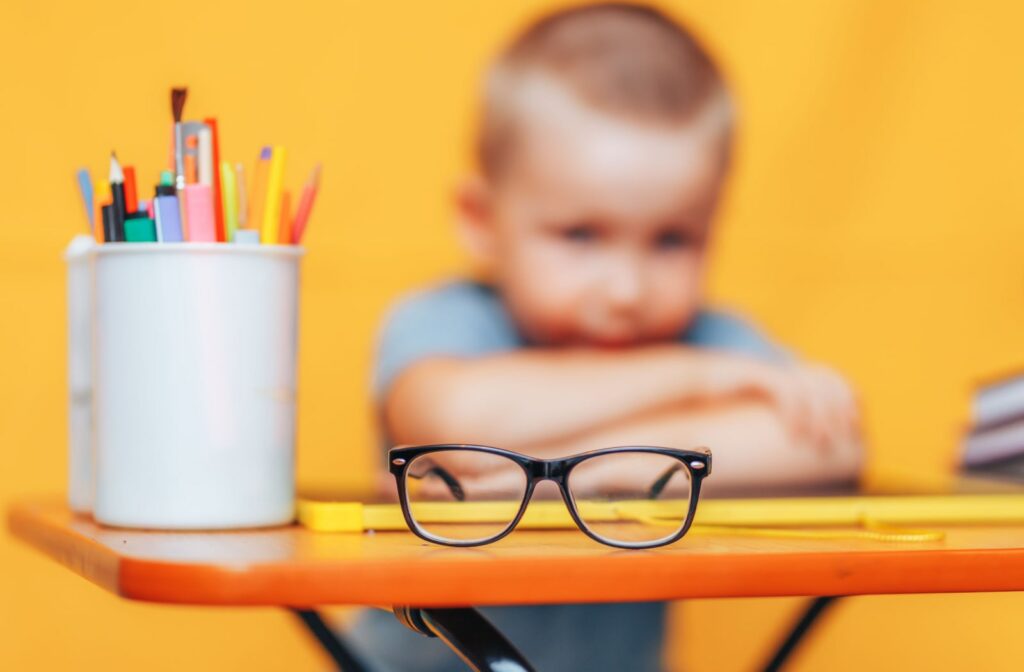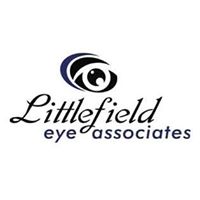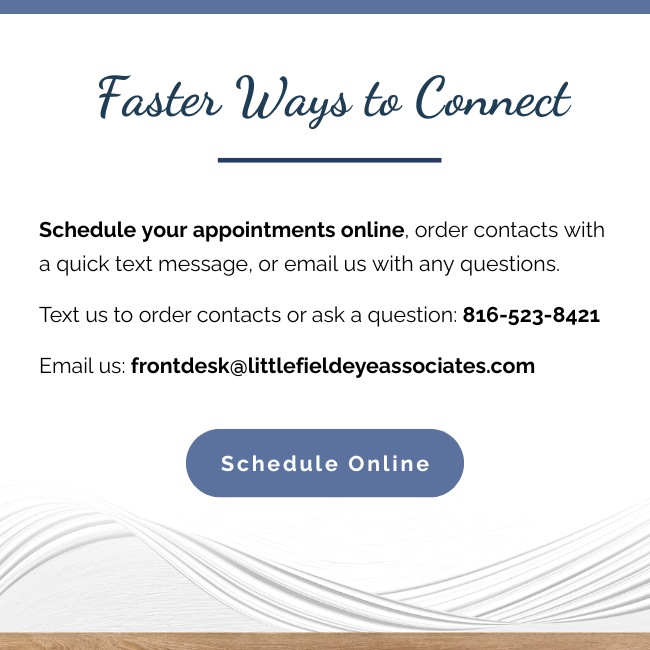Myopia is a common eye condition that results in distant objects appearing blurry while objects close by appear clear.
Unfortunately, myopia cannot be fully cured. However, it can be managed with several options, including low-dose atropine drops, orthokeratology lenses, and specialized glasses.
Visiting your optometrist for routine eye exams can help determine the rate of myopia progression and select a management option most suitable for an individual’s ocular needs.
What is Myopia?
Myopia, also known as nearsightedness, is a common refractive error, affecting about 30% of the U.S. population, where distant objects appear blurry while objects close by can be seen clearly.
Myopia occurs when the shape of the eye is too long or the cornea is too curved for the length of the eye, causing light entering the eye to focus in front of the retina instead of directly on it. This results in distant objects appearing blurry while close objects remain clear.
Causes & Symptoms of Myopia
Myopia typically develops in childhood and can progress into adolescence. Our eyes grow throughout our childhood and usually steady during early adulthood, around the age of 20.
The exact cause remains unclear, but factors such as genetics (having myopic parents) and extended periods of close-up work like reading or screen time are thought to contribute.
Symptoms of myopia include:
- Blurry vision when looking at distant objects
- Squinting to see clearly
- Eye strain or headaches
- Difficulty seeing while driving, especially at night
Risks of Untreated Myopia
One of the best ways to manage myopia is by visiting your optometrist for routine eye exams. Regular comprehensive visits help to monitor, detect, manage, and treat any potential ocular health concerns including high prescription levels.
Early detection of myopia can help to determine suitable management options for an individual that help to slow the progression of myopia, especially in children.
Untreated myopia can increase an individual’s refractive error, increase dependence on corrective lenses, and impair performance in daily activities.
An individual’s risk of developing eye diseases can increase if myopia remains untreated, including:
- Cataracts: Myopia can increase the risk of early development of cataracts, which clouds the lens of the eye and impairs vision.
- Glaucoma: Myopic individuals are at a higher risk for developing glaucoma, which can cause optic nerve damage and lead to vision loss.
- Myopic Macular Degeneration: The shape of the eye becomes elongated with high myopia. When the eye elongates, it stretches the retinal tissues and underlying structures of the eye, causing the retina to thin and become more fragile, significantly impairing vision.
- Retinal Detachment: High myopia stretches the retina, increasing the likelihood of retinal detachment. If left untreated, it can lead to permanent vision loss.
Why Can Myopia not be Reversed?
Currently, myopia cannot be reversed because it involves a physical alteration of the eye’s shape. While various treatments can correct or manage the condition, they do not change the elongated shape of the eyeball or the curvature of the cornea.
Refractive surgeries like LASIK or PRK cannot cure myopia. If candidates are suitable to undergo this procedure, these surgeries can significantly reduce or eliminate the need to wear glasses or contact lenses in people with myopia.
LASIK and PRK work by reshaping the cornea. Myopia develops because the shape of the eye is too long, these procedures do not reverse the elongation of the eye or an individual’s predisposition to myopia. This is why they can only correct the refractive error by altering the shape of the cornea.
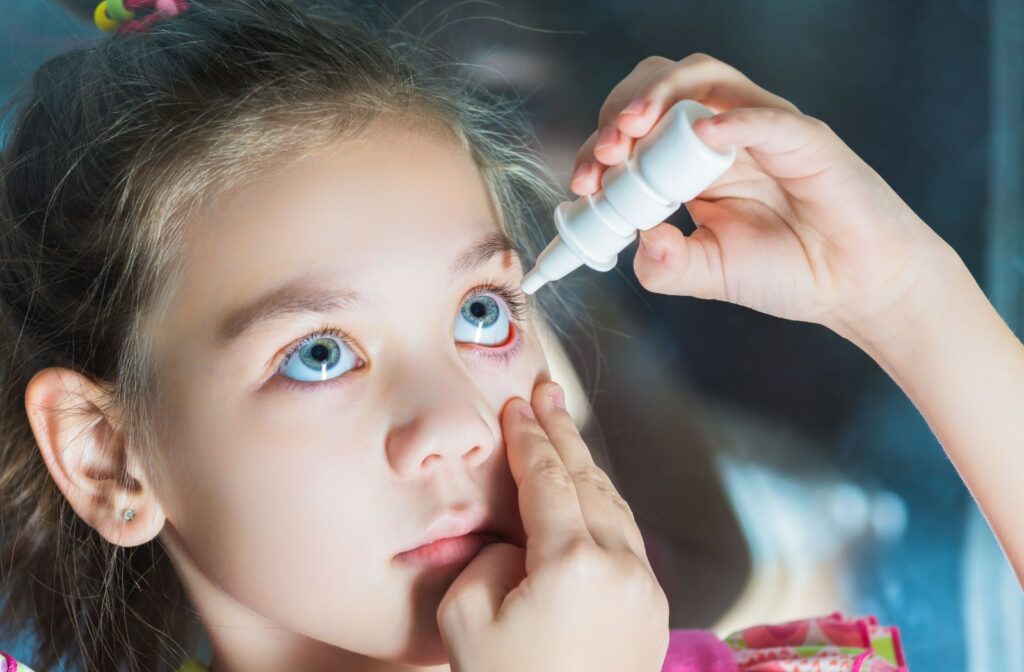
Options for Myopia Management
There are several treatment options available designed to help slow the progression of myopia. Consulting with your optometrist is recommended to determine a management option that is most suitable for an individual.
These treatment options may be combined. For example, your optometrist may suggest using low-dose atropine drops in addition to using multifocal eyeglasses.
Low-dose Atropine Drops
Myopia progression is primarily driven by the elongation of the eyeball. Low-dose atropine drops help to inhibit this elongation, which is the main factor causing myopia to worsen.
Atropine eye drops have been found to slow the progression of myopia in children. These drops work by temporarily dilating the pupil and relaxing the focusing mechanism of the eye.
The dose and duration of atropine treatment will be determined by your optometrist. When managing myopia, these drops are used once a day at night.
Orthokeratology Lenses
Orthokeratology (Ortho-K) lenses are specially designed rigid gas-permeable contact lenses worn overnight.
While the lenses are worn overnight, they gently reshape the cornea. This reshaping corrects the refractive error, allowing light to focus correctly on the retina when the lenses are removed in the morning, resulting in clear vision during the day without the need for glasses or contact lenses.
Ortho-K lenses have been shown to slow the progression of myopia in children.
Specialized Glasses
Specialized glasses, such as multifocal or bifocal lenses, can help manage myopia progression.
These lenses work by providing different levels of focus within a single lens, addressing both distance and near vision needs while influencing how light is focused on the retina.
These glasses provide different lens powers for different viewing distances, reducing the strain on the eyes during close-up tasks and thereby slowing down the elongation of the eyeball.
Schedule an Appointment!
While myopia cannot be cured, it can be effectively managed. Awareness and early intervention are crucial for preventing risks associated with untreated myopia.
Regular visits to your optometrist for routine eye exams help with detecting, monitoring, and managing myopia.Connect with our team at Littlefield Eye Associates to schedule an appointment for your routine eye exam!
